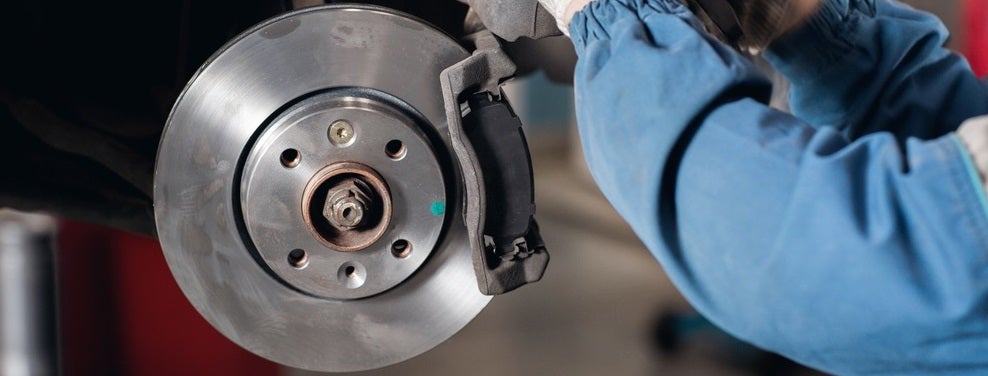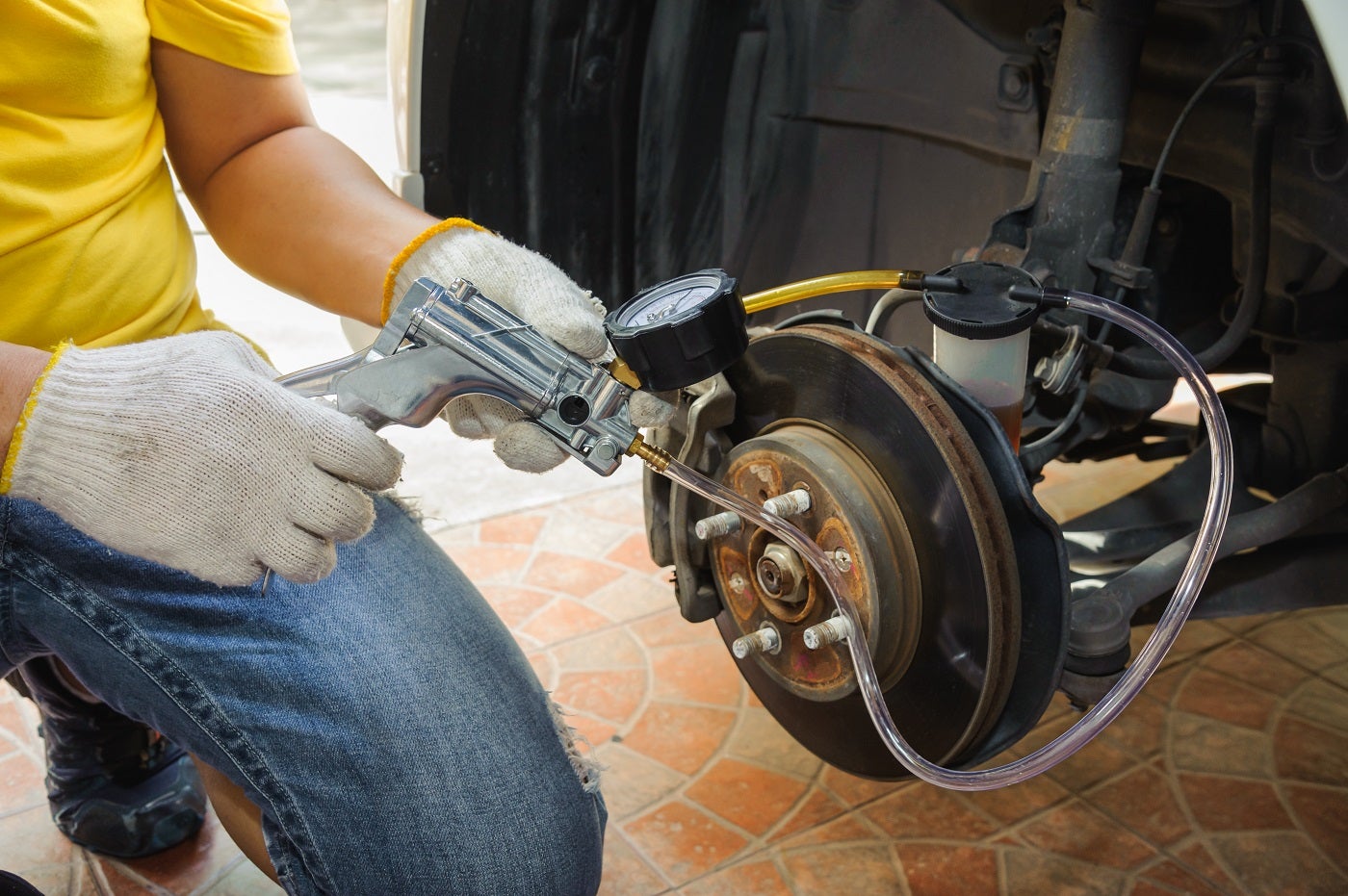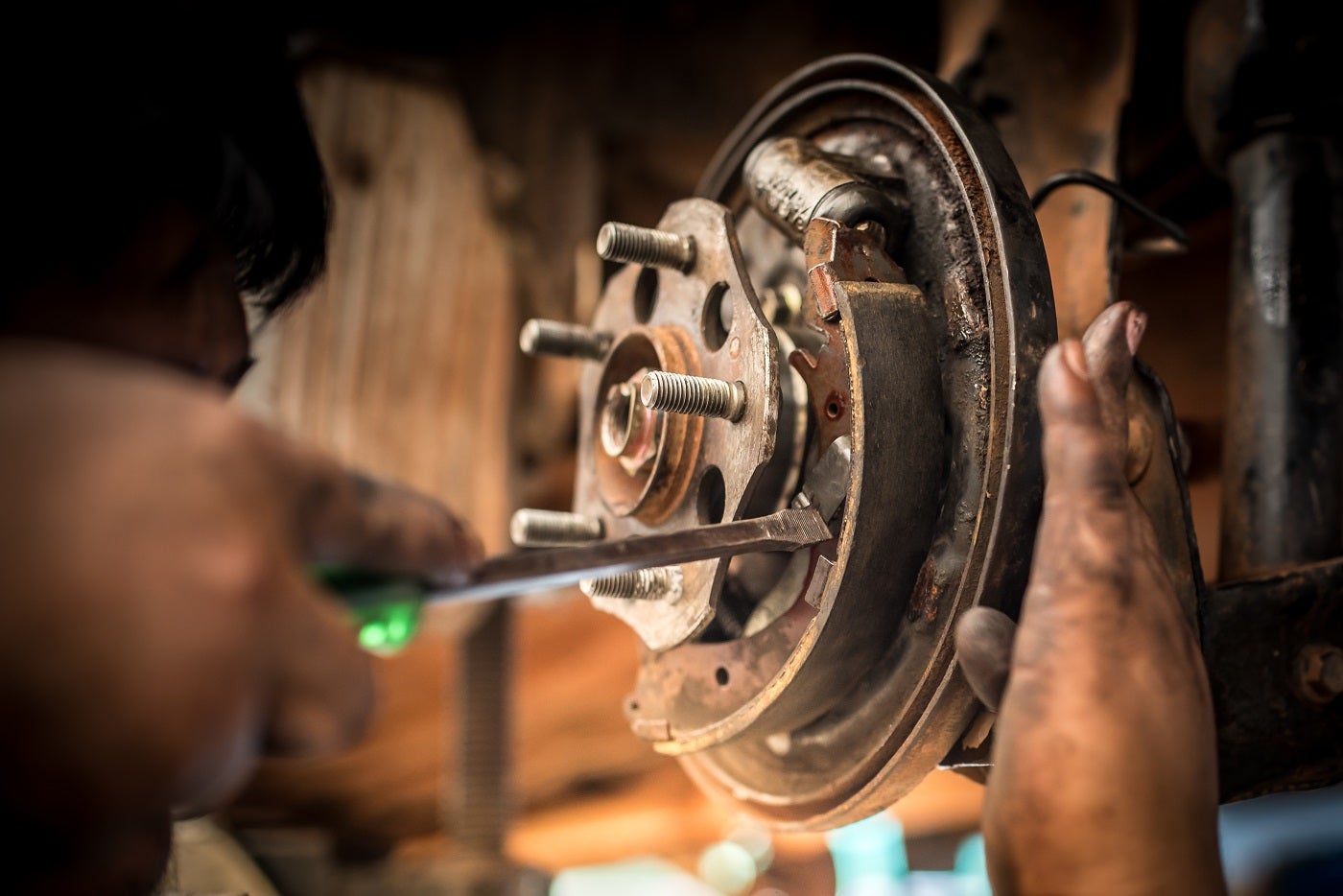How to Bleed Brakes

As you drive around Easton, Allentown, and Quakertown, Pennsylvania, you may have noticed a soft and spongy feel to your brake pedal. You need to know how to bleed your brakes, and we’re here to help.
Use this guide to understand the process involved and find answers to some common questions. Keep in mind that bleeding all your brakes can be time consuming. If you’d rather let our certified technicians do the work, feel free to book service at Brown-Daub Kia today!
What Do I Need to Bleed My Brakes?

You’ll need some common items and a few specialized tools to bleed your brakes. These include a brake bleeder wrench or a combination wrench that fits the bleeder screw for each of your four brakes. You’ll also want to have a clean glass jar, clear vinyl hose, some fresh brake fluid, and a friend to help.
How to Bleed Your Brakes
1. Find the brake bleeder screw. You’ll see one behind each of your four brakes. You may need to use a jack for easier access to the screw, but make sure you use jack stands for extra stability.
2. Loosen the brake bleeder screw. Use your wrench to loosen the bleeder screw, but don’t open it yet. Don’t be too forceful—be careful not to break off the screw.
3. Connect the vinyl hose. Put one end of the hose over the end of the bleeder screw and the other end into your glass jar. (Don’t have vinyl tubing? Just place the jar near the screw to catch the brake fluid.)
4. Have your friend pump the brake pedal a few times. This is where your helper comes in! Have them say “down” as they press down and “up” as they release.
5. After a few pumps, open the bleeder screw while your friend is holding the brake pedal down. The brake fluid will flow out, and you may see some air bubbles too.
6. Tighten the bleeder screw and have your friend release the brake pedal. Tighten the screw first, or else air could be sucked back into the brake lines.

7. Repeat. Loosen and tighten the screw as your partner presses and releases the brake pedal. When there aren’t any more air bubbles, you can finish up and move on to the next brake.
8. Top off the master cylinder throughout the process. Make sure there’s enough fresh brake fluid in the master cylinder as you bleed your brakes.
In What Order Should I Bleed My Brakes?
In most cases, you’ll want to start with the rear passenger brake, then the driver rear, then the passenger front, and finally the driver front. However, the process may differ for your make and model, so check your owner’s manual before you get started.
Need Help Bleeding Brakes? Give Us a Call Today
When you feel that squishiness in your brakes, now you’ll have the know-how to bleed your brakes! It’s a simple process, but it does take time to master.
If you have questions or need some help, just turn to the technicians at Brown-Daub Kia. We’ll be happy to perform brake service for all our Easton, Allentown, and Quakertown, PA, customers!
| Monday | 9:00AM - 6:00PM |
| Tuesday | 9:00AM - 6:00PM |
| Wednesday | 9:00AM - 6:00PM |
| Thursday | 9:00AM - 6:00PM |
| Friday | 9:00AM - 6:00PM |
| Saturday | 9:00AM - 5:00PM |
| Sunday | Closed |
| Monday to Thursday after 6pm by appointment only | |
| Monday | 7:00AM - 5:00PM |
| Tuesday | 7:00AM - 5:00PM |
| Wednesday | 7:00AM - 5:00PM |
| Thursday | 7:00AM - 5:00PM |
| Friday | 7:00AM - 5:00PM |
| Saturday | 7:00AM - 3:00PM |
| Sunday | Closed |
| All appointments after 3pm MON-FRI are Express oil changes only | |
| Monday | 7:00AM - 5:00PM |
| Tuesday | 7:00AM - 5:00PM |
| Wednesday | 7:00AM - 5:00PM |
| Thursday | 7:00AM - 5:00PM |
| Friday | 7:00AM - 5:00PM |
| Saturday | 7:00AM - 3:00PM |
| Sunday | Closed |


 Warranties include 10-year/100,000-mile powertrain and 5-year/60,000-mile basic. All warranties and roadside assistance are limited. See retailer for warranty details.
Warranties include 10-year/100,000-mile powertrain and 5-year/60,000-mile basic. All warranties and roadside assistance are limited. See retailer for warranty details.